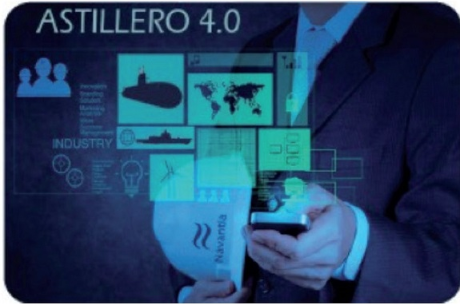Navantia’s Shipyard 4.0 model overview
DOI:
https://doi.org/10.25043/19098642.165Keywords:
Industry 4.0, Shipyard 4.0, Navantia, Plan de Transformación IndustrialAbstract
Navantia finished the analysis of the concept Industry 4.0 in 2016 and its application to the naval shipbuilding industry, referred to herein as Shipyard 4.0. The implementation process has begun with several projects that involved various technologies. In order to incorporate them in the new project, for naval vessels and systems, special focus has been put in the future F-110 frigate.
This document aims to provide an overview of the Shipyard 4.0 model and a brief discussion regarding the projects launched for its implementation in Navantia. The initiative 4.0 is a key development vector across all the industrial sectors in the future and its expected outcomes match the ones established by the Government of Colombia in its “Plan de Transformación Industrial” (Plan of Industrial Transformation). In this context, the new frigate program (PES) is a unique opportunity to engage the local industry, in which Navantia offers its willingness to cooperate.
Downloads
References
KLAUS SCHWAB, “The Fourth Industrial Revolution”, World Economic Forum, p.p. 11, 36.
Office of the Industry-Science Research Alliance, “Recommendations for implementing the strategic initiative INDUSTRIE 4.0”, ACATECH-National Academy of Science and
Engineering.
MICHAEL E. PORTER and JAMES E. HEPPELMANN, “How Smart Connected Products Are Transforming Companies”, Harvard Business Review, p.p. 6, 7.
GEORGE WETERMAN, DIDAR BONET and ANDREW MCAFEE, “Leading digital”, Harvard Business Review Press, p.p. 109.

Published
How to Cite
Issue
Section
License
The authors who publish in this Journal certify that:
- The work submitted for publication in The Ship Science and Technology journal, was written by the author, given that its content is the product of his/her direct intellectual contribution.
- All data and references to material already published are duly identified with their respective credits and are included in the bibliographic notes and quotations highlighted as such.
- All materials submitted for publication are completely free of copyrights; consequently, the author accepts responsibility for any lawsuit or claim related with Intellectual Property Rights thereof, Exonerating of responsibility to The Science and Technology for the Development of Naval, Maritime, and Riverine Industry Corporation, COTECMAR.
- In the event that the article is chosen for publication by The Ship Science and Technology journal, the author state that he/she totally transfers reproduction rights of such to The Science and Technology for the Development of Naval, Maritime, and Riverine Industry Corporation, COTECMAR.
- The authors retain the copyright and transfer to COTECMAR the right of publication and reproduction of the work which will be simultaneously subject to the Creative Commons Attribution License (CC -BY) , which allows the license to copy, distribute, display and represent the work and to make derivative works as long as it recognizes and cites the work in the manner specified by the author or licensor.
- For more information about the Creative Commons Attribution License (CC -BY) and his use and scope, please visit the following web page https://creativecommons.org/licenses/by-sa/4.0/legalcode








